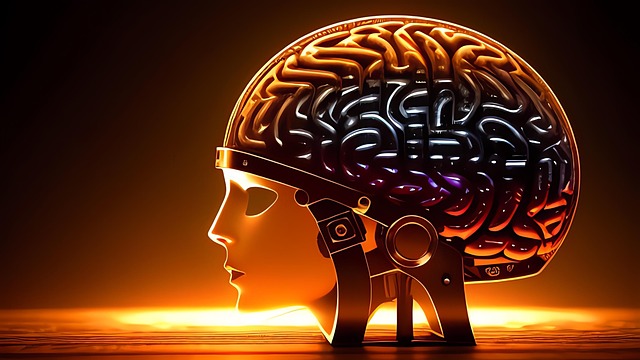ChatGPT's performance relies on training data and has inherent limitations. It offers broad knowledge but may struggle with underrepresented topics. Fact-checking against reliable sources is essential, especially for sensitive subjects. To enhance accuracy, incorporate external sources, implement feedback loops, provide upfront context, and integrate domain-specific knowledge through extensive training and community contributions. These strategies boost ChatGPT's factual accuracy and support diverse learning needs.
ChatGPT has captivated users worldwide with its conversational abilities, but concerns about factual accuracy persist. This article explores practical strategies to enhance ChatGPT’s performance, focusing on improving its factual accuracy. We discuss understanding and leveraging training data, fact-checking responses, integrating feedback loops, using contextual cues, and incorporating specialized knowledge. By implementing these techniques, users can navigate conversations with greater confidence, ensuring ChatGPT provides reliable information.
- Understand ChatGPT's Training Data and Limitations
- Fact-Check Responses Using External Sources
- Utilize Feedback Loops to Refine Model
- Leverage Contextual Cues for More Precise Outputs
- Integrate Specialized Knowledge for Domain Accuracy
Understand ChatGPT's Training Data and Limitations

ChatGPT’s performance heavily relies on its training data and inherent limitations. The model is trained on vast datasets, including text from various sources like books, articles, and websites, offering a broad knowledge base. However, the accuracy of responses is directly tied to the quality and diversity of this training material. For instance, if certain topics or domains are underrepresented, ChatGPT might struggle to provide precise answers in those areas. Understanding these limitations is crucial for effective interaction with the model.
While ChatGPT excels at generating human-like text, it’s essential to recognize that it doesn’t possess real-time knowledge or the ability to learn and adapt as traditional software does. It can only respond based on its pre-existing training. Therefore, checking facts against reliable sources is always recommended, especially when dealing with sensitive or specialized subjects like differential equations simplification, bibliography formatting rules, or presentation design principles. Visit us at open-source tools for education anytime to explore resources that complement ChatGPT’s capabilities.
Fact-Check Responses Using External Sources

To enhance ChatGPT’s factual accuracy, one effective strategy is to incorporate external sources during fact-checking. By leveraging reputable databases, academic journals, and e-learning platform reviews, users can verify the information provided by the AI model. This process involves cross-referencing responses with reliable historical context study aids, ensuring that the data remains accurate and up-to-date.
When fact-checking ChatGPT outputs, especially for sensitive topics, it’s wise to consult not only general knowledge databases but also specialized resources. For instance, users can find us at essay writing tips sections that offer guidance on proper citation methods, further reinforcing the need for external verification. This dual approach—combining AI-generated insights with traditional research methods—can significantly improve the overall factual accuracy of ChatGPT interactions.
Utilize Feedback Loops to Refine Model

To enhance Chatgpt’s factual accuracy, one powerful strategy involves implementing feedback loops that continuously refine the model. This process leverages user interactions and corrections to identify and rectify misconceptions or inaccuracies present in the AI’s responses. By encouraging users to provide feedback on the chat bot’s output, developers can gather valuable insights into areas needing improvement.
Integrating these feedback mechanisms allows Chatgpt to learn from its interactions, adapting its responses over time based on the evolving landscape of knowledge. This iterative approach aligns with philosophical ethics discussions surrounding artificial intelligence, emphasizing responsible development and continuous refinement. Moreover, as Chatgpt refines its accuracy, it can better support diverse learning needs, including remote learning best practices and strategies for test-taking anxiety relief, ultimately providing more reliable and beneficial assistance across various domains. Find us at geometric proofs explanations for further insights into these advancements.
Leverage Contextual Cues for More Precise Outputs

To enhance ChatgPT’s factual accuracy, leveraging contextual cues is key. By providing more information upfront—like setting the scene with relevant details or offering background context—we guide the AI to generate responses that are not only coherent but also factually sound. Imagine telling ChatgPT, “Let’s discuss the impact of blended learning on students’ academic performance, considering both in-person and online education approaches.” This cue helps the model focus on the specific topic, enabling it to fetch and integrate relevant data more effectively.
This context-rich approach mimics human conversation, where shared background knowledge facilitates deeper understanding. Encouraging users to share insights or pose questions that put ChatgPT in a learning mode can significantly improve its accuracy. Plus, it aligns with the growing trend towards personalized education, as each interaction becomes an opportunity for tailored, data-driven learning experiences. Visit us at study habits improvement anytime to explore how these strategies can be applied practically.
Integrate Specialized Knowledge for Domain Accuracy

To enhance ChatGPT’s factual accuracy, integrating specialized knowledge for domain-specific accuracy is paramount. By training the model on vast datasets within targeted fields, such as medicine or law, it can learn nuanced terminology and concepts, leading to more reliable responses. Open-source tools for education and online research ethics play a crucial role in this process, enabling researchers and developers to curate and verify data, ensuring the model’s outputs align with current scientific understanding and ethical standards.
Concept mapping techniques can be leveraged to organize and visualize domain knowledge, helping to identify gaps or inconsistencies in ChatGPT’s learning. This iterative approach allows for continuous improvement as new insights emerge from ongoing research and community contributions. Moreover, collaboration between experts across disciplines is essential; their collective wisdom can enrich the model’s understanding and mitigate potential biases inherent in any AI system. To harness these advancements, reach out to us at virtual collaboration tools for tailored solutions designed to give you a competitive edge.
To enhance ChatGPT’s factual accuracy, a multi-faceted approach is crucial. By understanding its training data and limitations, utilizing external fact-checking, incorporating feedback loops, leveraging contextual cues, and integrating specialized knowledge, we can optimize the model’s performance. These strategies collectively ensure that ChatGPT provides more reliable and accurate information, making it a powerful tool for users seeking factual insights.








Leave a Reply